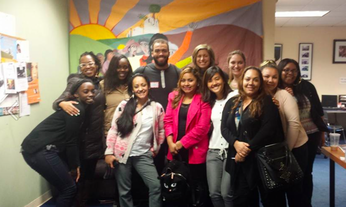 This piece was originally published on the Stanford Social Innovation Review. Over the past month, 4 million students have obtained degrees from colleges and universities around the country with the hope of entering the workforce. Studies show that for 55 percent of them, a concern for social causes will be an important factor in deciding where to work. The strong interest among the college-aged in doing social good has led to an explosion of social entrepreneurship university programs around the world—there are now 148 centers across 350 countries. Ashoka U, which promotes social innovation in higher education by developing a global network of students, faculty, and community leaders working to advance the field, has expanded to 30 campuses during the past few years alone. Top business schools now offer twice as many courses on nonprofit management as they did in 2003. These statistics leave no doubt that offering university courses and degrees in social entrepreneurship is not a passing trend—it’s here to stay. As the latest class of aspiring changemakers heads from the campus out into the working world, an important question that all who are concerned with advancing the field must consider is: How well are we preparing our students to grapple with the practicalities of social entrepreneurship in the field? My experience teaching at Stanford’s Program on Social Entrepreneurship has raised my awareness of the vital role of service learning—skills-based training in the classroom to share experiential wisdom about the day-to-day work of social entrepreneurship—in bridging the gap between theory and practice. In the class I teach, for example, I lead students through sessions on fundraising methods, measuring the impact of programs, and navigating culture. To provide additional practical insight, service-learning students have the opportunity to apply what they have learned through final projects that support the work of nonprofits. A unique aspect of the Program on Social Entrepreneurship is that we host nonprofit leaders as social entrepreneurs in residence (SEERS Fellows), who are mid-career practitioners. For an entire academic quarter, they participate in my class weekly, sharing with the students their perspectives and experiences directly from the field. Students also work side-by-side with the SEERS Fellows on projects that support the nonprofits’ work. For example, last quarter one group of our students worked with SEERS fellow Lateefah Simon, the former executive director and board chair for the Center for Young Women’s Development (CYWD), to develop a needs assessment for poor young girls of color in San Francisco. The students conducted extensive demographic research; they interviewed a dozen young women who had benefitted from CYWD’s programming, and spent an afternoon with girls in juvenile hall to learn from them about their paths into the criminal justice system and the types of services they wish existed to help others like them stay out of trouble. The students then worked closely with Simon and me to reflect on what they discovered and develop a set of recommendations for CYWD’s programming going forward. The students were deeply affected by the realization of how little they understood—from their position of relative privilege—about the difficulties of the young women’s lives. While they were initially excited about developing a mentoring program for these at-risk young women to help them apply to college, they learned that the application process was the least-problematic hurdle the girls faced in getting a four-year education. Other barriers included a lack of money for housing, poor academic preparation for college-level classes, and the necessity of working to provide income for their families. Many of the students attested in their course evaluations to the profound impact of the more-practical training they received in the class. One student wrote, “The service-learning component of the course was central. It grounded my learning of theories and concepts, particularly of cultural sensitivity, [in] the reality, in a way I would never have been able to see/connect concretely otherwise.” Another student pointed out, “I learned how to deal with challenges of working in the real world, as in, not an isolated ‘Stanford bubble’ setting.” Bringing such real-world experience into the curriculum through community-service and volunteering programs, and through instructor and practitioner involvement in designing rich training experiences, both in the field and in the classroom, is critical to improving the preparation of the next-generation of social entrepreneurs. The service-learning approach at Stanford has been so successful that the university’s Haas Center for Public Service, along with campus partners, has set the ambitious goal of doubling the number of service-learning classes on campus by the end of 2016. All universities offering courses in social entrepreneurship should begin working to make this approach an integral part of their curricula. This requires training professors in the craft; the Stanford Haas Center’s rigorous program for faculty gives them the tools to integrate skills-based lessons—such as how to lead reflection exercises with students, how to evaluate project-based work, and how to craft projects that are truly meaningful for students and practitioners alike—into their instruction. This training was critical to me as I developed my own class. In our efforts to continue making social entrepreneurship a transformative force in solving the complex social problems problems, innovation in the classroom is as important as it is in the field.
0 Comments
 This piece was originally published on the Huffington Post. The fast approaching January 6th deadline for applications for the Echoing Green Fellowship, which awards the founders of socially innovative organizations up to $90,000 in funding, prompts me to wonder: are we actually thwarting potential by putting too much stock in the individual as opposed to rewarding collaborative forms leadership? Thousands of social entrepreneurs across the country are furiously working on their applications, as they do throughout the year for the recent explosion of other such fellowships and prizes, offered by organizations including the Draper Richards Kaplan Foundation, the Schwab Foundation, Ashoka, and the Skoll Foundation. While I could not be more supportive of these prizes and awards, I do fear that they are leading to a cult of personality regarding social entrepreneurs, which not only contributes to burnout but undervalues the leadership potential of so many others who are vital to founders’ success in their missions. While social entrepreneurs are accomplishing great things, from my own experience and from my study of social entrepreneurship, I have observed that they would be capable of so much more if the community put more emphasis on collaboration. Don’t get me wrong. These awards have made the difference in helping many organizations to thrive, or even to get off the ground. Take 2009 Echoing Green Fellow Natalie Bridgeman Fields, who founded the Accountability Counsel. Natalie’s organization provides legal representation to dozens of grassroots communities around the world who have suffered serious environmental and human rights violations by multinational corporations. For example, in 2012 Accountability Counsel successfully stopped the construction of a hydroelectric project in Oaxaca, Mexico that would have deprived local indigenous villagers of access to clean water. Natalie says that without Echoing Green’s support, she would never have been able to get the organization past the first hurdle. But at the same time, these prizes have encouraged a view of social entrepreneurs as indomitable leaders who crafted brilliant new ideas all on their own and then made them work through the sheer forces of will and charisma. This hero model creates massive expectations for what individual leaders can achieve, which contributes to them carrying too much weight on their shoulders rather than seeking out more input from collaborators. Studies have shown that as a result the median tenure of executive directors is between just three and four years, hobbling so many organizations with frequent executive turnovers and leaving them without a consistent driving force. The model also leaves the thousands of individuals who support those leaders in the shadows. No successful and truly influential organization is the work of one person. Where are the prizes for the army of individuals who support founders? We must do more to recognize and support this legion of compatriots by cultivating collaborative models for leadership. Collaborative leadership can take several forms: 1. Build A Network: Network leadership relies on many stakeholders to direct the organization. Spark, a nonprofit organization I co-founded in 2004, is an example. It’s now the largest group of millennial philanthropists in the world. When we started Spark, we did not set out to establish a network, it happened by necessity. Because we did not have any staff, we heavily relied on our members to help plan events, research potential grantees and reach out in the community to recruit new members. Today Spark consists of a network of 10,000 members who participate in every aspect of direction-setting for the organization – from deciding grant priorities to hosting fundraising events to leading strategic planning. 2. Create More Senior Leadership Positions: A 2006 national study of nonprofit executive leadership showed that the more staff support an executive director has, the more likely that person is to stay in her role. In this spirit, founders should delegate more responsibility to well selected and well-groomed deputies. For example, Reading Partners started as a small Bay Area nonprofit providing volunteer tutors to at-risk students. The organization was able to scale quickly into ten school districts across the country by training leaders in each of the cities to replicate the model. As a result, Reading Partners has helped thousands of students all across the country to become better readers. 3. Cultivate a Deep Bench through Board Development: Too often boards are thought of only as mechanisms for fundraising – meant to impress with a lineup of established names who also have the connections to help bring in support. Founders should learn to utilize board members for much more, such as to provide significant strategic input, support on personnel issues and organizational governance frameworks. The Draper Richards Kaplan Foundation provides leadership training for the CEOs of the organizations they support. But they do not stop there. Instead they actually offer one of their senior staff as a 3-year board member of their entrepreneurs’ organizations, to help train their boards by example on everything from how to administer an executive director evaluation process, to how to measure organizational results. Without a doubt, organizations need a strong leader at the core and a charismatic voice for promoting the cause, and founders are often ideally suited to play these roles. But to do so effectively, and for the long term, they need these models for collaboration. All supporters of social entrepreneurship should be promoting them. We can only achieve the sweeping social change we aspire to by harnessing the leadership potential of all individuals involved in the cause. |
|
 RSS Feed
RSS Feed